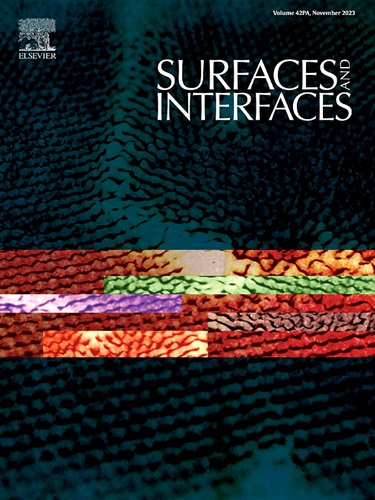Double-layered cracked networks using vertical graphene grown on carbon nanofibers for highly stable stretchable strain sensors
IF 5.7
2区 材料科学
Q2 CHEMISTRY, PHYSICAL
引用次数: 0
Abstract
The increased demand for wearable devices that can be used in various applications requires the development of stretchable strain sensors with high performance and high stability. In this study, we propose double-layered cracked conductive networks to fabricate highly stable strain sensors. The conductive network consists of vertical graphene grown on carbon nanofibers (VG@CNFs) and reduced graphene oxide (rGO). The densely packed VG sheets formed strong interactions with rGO sheets. A robust VG@CNF/rGO hybrid film was partially embedded in an elastomer to create a double-layered conductive film. Due to the double-layer architecture, the bottom layer anchored in the elastomer withstands high strains and maintains the conductive paths, whereas the top layer without elastomer fixation can be easily fractured and induces abrupt changes in the conductive paths. The presence of VG@CNF provided synergy with the double-layered cracked networks, facilitating reversible crack generation and reconstruction of the paths during repeated stretch–release cycles. Therefore, the double-layered strain sensor exhibited superior sensing performance with a stretchability of 144.6 %, sensitivity (gauge factor) of 183.5, and minimal change in the resistance responses during 1000 stretching–releasing cycles, outperforming the CNF-based sensors. The VG@CNF-based double-layered sensors attached to the human body detected both small and large movements.

求助全文
约1分钟内获得全文
求助全文
来源期刊

Surfaces and Interfaces
Chemistry-General Chemistry
CiteScore
8.50
自引率
6.50%
发文量
753
审稿时长
35 days
期刊介绍:
The aim of the journal is to provide a respectful outlet for ''sound science'' papers in all research areas on surfaces and interfaces. We define sound science papers as papers that describe new and well-executed research, but that do not necessarily provide brand new insights or are merely a description of research results.
Surfaces and Interfaces publishes research papers in all fields of surface science which may not always find the right home on first submission to our Elsevier sister journals (Applied Surface, Surface and Coatings Technology, Thin Solid Films)
 求助内容:
求助内容: 应助结果提醒方式:
应助结果提醒方式:


